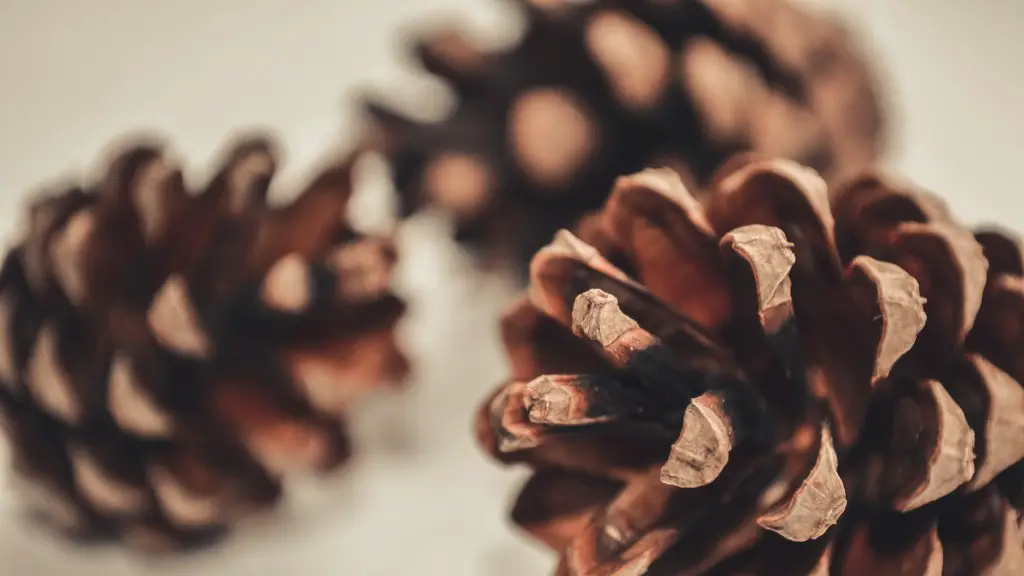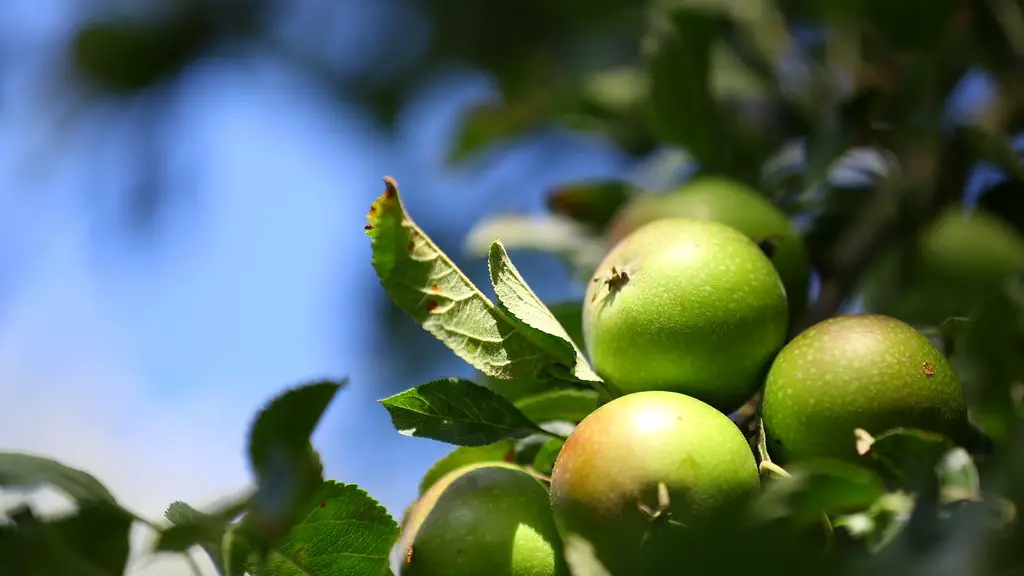Lemon trees are an attractive and rewarding addition to the garden. Caring for your lemon tree properly will ensure that it produces juicy, fragrant fruit. Below, we outline some tips and tricks to help you support your lemon tree for years to come.
Firstly, choose a well-draining site for your tree. Lemon trees need to be kept in slightly acidic soil and need to be protected from extreme temperatures. Ensure that your tree is placed in a spot where it gets at least six to eight hours of sunlight each day.
Next, keep the soil moist but avoid overwatering. Lemon trees are drought tolerant but still prone to wilting in arid conditions. Aim to water your tree no more than once a week. If your tree is showing signs of wilting, then increase the amount of water it receives. Utilize a soaker hose to ensure that the water penetrates deep into the soil.
Also, feed your tree with a fertilizer specially designed for citrus plants. Work the fertilizer into the soil when you first plant your tree. After that, feed your tree once more each year as it begins to bud. This will provide essential nutrients to your tree, helping it to stay healthy and produce tasty fruit.
Additionally, prune your tree to maintain a manageable size and shape. Prune away any damaged or dead branches, as well as any that are growing in an awkward manner. Pruning should be done in early spring, when the tree is still dormant.
Finally, watch for signs of disease and pests. Citrus trees are particularly prone to aphids and scale insects. If you notice anything odd about your tree, contact a local plant expert to identify the issue and provide a suitable treatment.
Pest Control
Proper pest control is essential when supporting a lemon tree. Common pests that may affect your tree include aphids, scale insects, mealybugs, mites, thrips and whiteflies. When dealing with any pest issue, use natural remedies like horticultural oil and neem oil before resorting to chemical products.
Aphids are the most common pests that affect citrus trees. These tiny pests feed on the lemon tree’s sap, resulting in discolored leaves and stunted growth. To treat an aphid infestation, use a forceful stream of water to wash the pests from the tree, or bring in ladybugs as a natural form of pest control. Horticultural oil can also be applied to get rid of the aphids.
Scale insects are another common citrus pest. These waxy insects attach themselves to the leaves and stems of the tree. If left unattended, the tree will experience weakened growth and a sooty mold may even grow on the leaves. To get rid of scale insects, use a slow-release insecticidal soap that won’t harm beneficial predators.
Mealybugs are small, white, wax-covered pests that can affect many types of plants, including lemon trees. They feed on the sap and can cause serious damage if left unchecked. To treat a mealybug infestation, prune off any affected branches and spray the tree with neem oil or insecticidal soap.
Mites are another pest that can affect citrus trees, causing the leaves to discolor and curl. To get rid of mites, spray the tree with a gentle jet of water and apply an insecticidal soap. If the mite population is especially large, an insecticide may be necessary to get rid of them.
Fertilizing
Fertilizing your lemon tree is important for its health and growth. Lack of nutrients can result in poor growth, yellow leaves and fewer fruits. Luckily, it’s easy to provide your lemon tree with the nutrients it needs.
When selecting a fertilizer for your lemon tree, make sure to choose one specifically designed for citrus plants. These types of fertilizer will contain nitrogen, phosphorus, and potassium as well as trace elements such as magnesium and boron. Never use a fertilizer that’s meant for other kinds of plants on your lemon tree.
Apply the fertilizer to the soil in early spring when the tree is still dormant. Avoid applying the fertilizer during the summer, as the tree may be burned by the harsh chemicals. Make sure to water the soil after applying the fertilizer, as it needs to penetrate into the soil in order to be effective.
Fertilize your lemon tree once more each year as it begins to bud. If your tree is showing signs of malnutrition, you can increase the frequency of fertilizing.
Propagating
Propagating a lemon tree is relatively simple. Cuttings can be taken from your plant in spring or early summer and rooted in either potting mix or soil.
Pick your cuttings carefully, and make sure to cut at least two inches below any flowers or buds. Dip the cuttings in a rooting hormone and place them in a moist rooting medium. You can also place the cutting in water until it develops roots, then transfer it to the potting medium.
Once the cuttings have developed strong roots, it’s time to transplant them. Choose a pot that’s slightly larger than the one that the cutting was in, and fill it with a well-aerated and well-draining potting soil. Place the cuttings in the pot, then water lightly and keep in a warm spot.
Your lemon tree cutting should start to grow more quickly once it’s been transplanted. Keep it in a sunny spot and continue to water as needed, making sure that the soil never dries out completely. Once it’s strong and healthy, you can repot it into a larger pot or move it to an outdoor garden.
Productivity
The productivity of a lemon tree is largely dependent on its care. If your tree isn’t receiving the sunlight, water and nutrients necessary, it won’t be able to produce a bountiful harvest of lemons.
Start by making sure that your tree is getting enough sunlight. Six to eight hours of direct sunlight each day is ideal for lemon tree growth. If you live in a climate with cooler winters, you may need to provide your tree with some protection from the cold.
Ensure that the soil remains moist but avoid overwatering the tree. Aim to water your lemon tree no more than once a week. When planting your tree, make sure to use a fertilizer that is specifically designed for citrus plants.
Finally, keep an eye out for pests. Common pests that may affect your lemon tree include aphids, scale insects, mealybugs, mites and thrips. If you notice anything odd about your tree, contact a local plant expert.
Harvesting
Harvesting a lemon tree is an exciting experience. Your lemon tree should produce its first fruit within a year or two of planting. Keep an eye out for the signs of ripening, such as changing color and fragrant aroma. Once the fruit is ripe, it’s ready to be harvested.
To harvest your lemons, use pruning shears or scissors to cut the fruit from the tree. Never pull the fruit from the branch as this can result in damage to the fruit or even the branch. Make sure to inspect the fruit carefully before storing, discarding any fruits that are infected with pests or disease.
Once the fruit has been harvested, it can be stored in the refrigerator or even frozen for longer-term storage. Make sure to allow the fruit to fully ripen before storing or freezing, as unripe fruit can result in a sour flavor.
Propagating
Propagating a lemon tree is a great way to increase your lemon crop. You can take cuttings from your existing tree and root them in either potting mix or soil. Begin by picking your cuttings carefully and making sure to cut at least two inches below any flowers or buds.
Dip the cuttings in a rooting hormone and place them in a moist rooting medium. You can also place the cutting in water until it develops roots, then transfer it to the potting medium. Once the cutting has developed strong roots, it’s time to transplant it.
Choose a pot that’s slightly larger than the one that the cutting was in and fill it with a well-aerated and well-draining potting soil. Place the cutting in the pot, then water lightly and keep in a warm spot. Your lemon tree cutting should start to grow more quickly once it’s been transplanted.
Keep it in a sunny spot and continue to water as needed, making sure that the soil never dries out completely. Once it’s strong and healthy, you can repot it into a larger pot or move it to an outdoor garden.




